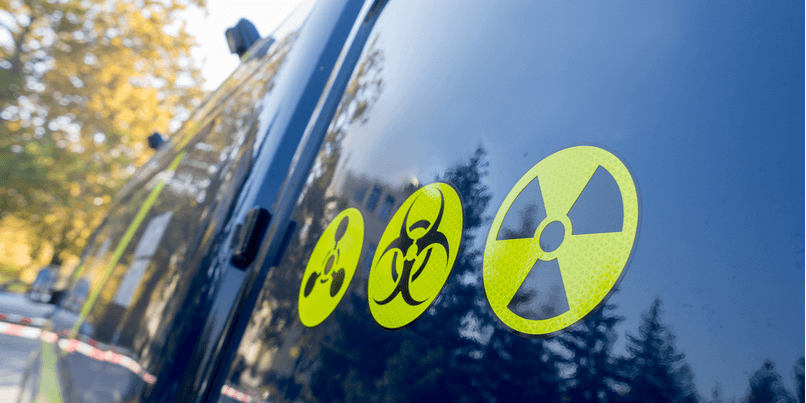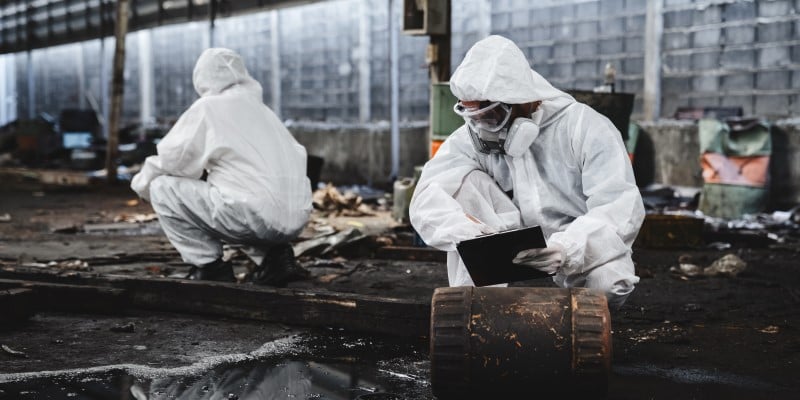 In an ideal world, an emergency response team would know exactly what kind of radiological hazard they were attending before they arrived on the scene of an incident. This might be via a resource such as a central database that lists the addresses of properties that are known to contain specific sources of ionising radiation.
In an ideal world, an emergency response team would know exactly what kind of radiological hazard they were attending before they arrived on the scene of an incident. This might be via a resource such as a central database that lists the addresses of properties that are known to contain specific sources of ionising radiation.
In other cases, such as a road traffic accident for example, that risk might not become apparent until responders reach the incident and are confronted with a clear visual warning in the form of a trefoil.
But what about those instances in which a warning sign has been inadvertently dislodged or damaged in the course of an incident? Or in situations where a radiation source is being stored, or used, for illegitimate means?
In the absence of any form of primary warning, it will be vital to have access to the right instrument (or instruments) to determine firstly that a threat exists and, secondly, what the exact nature of that threat happens to be.
Ensuring realism in emergency response training
When it comes to training for radiological incidents, the ability for instructors to create a sufficient degree of realism can present a significant challenge. At the heart of the issue is the fact that using actual detector equipment in combination with general purpose check sources can often lead to limited or compromised learning outcomes.
The use of a radiological check source inherently means that only an extremely low level of radiation can ever be detected. Check sources also preclude the opportunity for an instructor to vary the type of source being used - for example in the case of a training scenario where the goal is for the trainee to be able differentiate between an individual in possession of a harmless radiation source (such as a form of medical radiation) and the deliberate concealment of a genuine threat such as Cobalt 60.
To ensure that trainees are sufficiently prepared, a radiological training instructor might well opt to use a form of simulator detector device in a training scenario.
So what advantages might there be in using a simulator version of a radiation detector in the context of a radiation safety training exercise?
Maintaining safety
A primary consideration is unquestionably around the issue of safety - for the trainees, for the instructor, for the general public, and for the environment.
In the case of radiological teams who are equipped with the ADM-300A Multi-Functional Survey Meter, for example, a simulator such as the ADM-300A-SIM can provide a safe training solution whilst still replicating every operational feature of the actual device.
In this example, the hazardous ionizing radiation source is replaced with a harmless GS3 electronic source, resulting in zero risk either to people or the surrounding area.
Reducting wear and tear
The use (or abuse) of actual detectors as part of training scenarios can have a significant impact on the total cost of ownership due to the need for ongoing repairs, preventative maintenance and calibration.
Simulator radiation detectors, in contrast, are not subject to exposure to ionizing radiation, they require very little in the way of consumables and they very rarely suffer natural failure, which means the ongoing cost of ownership is low and operational readiness is always maintained.
Providing compelling training scenarios
A core objective of a simulator training device such as the ADM-300A-SIM is to ensure that trainees are equipped with the critical skills that they need for the safe search, reconnaissance, survey and location of ionizing radiation threats.
Such devices can also be invaluable in providing personnel with a greater practical understanding of inverse square law, safe demarcation, shielding and dose rate mapping - and in enabling instructors greater flexibility to conduct multi-detector or multi-isotope training within the same scenario.
Successful training for radiation incidents relies on the provision of realistic, hands-on, easily repeatable learning opportunities that can be conducted with zero personal or environmental risk. Opting for training devices that require little or no preventative maintenance can also ensure that the "whole life" cost of ownership stays as low as possible.







